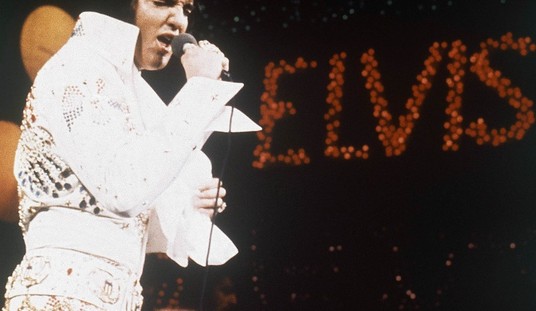In the National Journal, Neil Munro explores “The Diversity Economy.” His article employs a model similar to Alvin and Heidi Toffler’s epochal 1980 book the Third Wave to describe the industrial economy of the first half of the 20th century, and its much more diverse high-tech “demassified” (as the Tofflers would say) successor:
The Industrial Economy
Back in the 1920s and ’30s, entrepreneurs developed centralized, mass-production factories. These industrial pioneers forced technological development and social change; the key innovation was Henry Ford’s tightly controlled production line, which spewed out 845,000 vehicles in 1921, nearly all of them uniformly black Model Ts. Ford’s assembly-line approach wiped out local companies that had built many different types of wagons and autos in small numbers. The pattern was repeated in other industries.
The big factory also reshaped national culture. In 1913, almost 90 percent of the craftsmen hired by Ford soon quit because they hated his regimented production line.
But other workers took the higher pay, donned blue collars, and toiled alongside black migrants from the South and immigrants from Germany, Italy, Poland, and Russia. They and others gradually formed big labor unions, vacationed on the shore, and relaxed by going to see movies mass-produced by large studios, in which clean-cut heroes danced with glamorous women, machine-gunned Nazi officers, and marched mobsters to their deaths in that epitome of Industrial Age efficiency: the electric chair.
Postwar and in large waves, these upwardly mobile workers used their cars to leave their ethnic neighborhoods for the new suburbs, including Levittown, N.Y. There, they filled cookie-cutter houses with babies, as well as products made by General Electric, General Mills, and General Motors.
The same forces had a profound effect on government. The industrial laborers’ collective votes helped to sweep the Democratic Party into power in 1932, and together they built a big bureaucracy to accomplish big tasks–to regulate the economy, destroy German and Japanese fascism, aid the weak and the elderly, and train generations of new workers. Although managers and laborers, companies and unions fought bitterly and sometimes violently over how best to distribute the wealth generated by the factories, a consensus formed by the 1950s that Big Government worked, and that what was good for General Motors was indeed good for America.
The cultural trend eventually reached the Supreme Court, whose Democratic-appointed judges after 1936 endorsed uniform federal regulation of farming, employment contracts, and working conditions. By the 1950s, the Court was acting to centralize authority over cultural debates, eventually ruling on controversial matters involving racial equality, education requirements, and even sex, religion, and speech.
The Diversity Economy
The industrial economy fostered economic and political centralization, but the diversity economy promotes a different culture and politics.
In this new era, diverse professionals in the legal, media, medical, education, advertising, entertainment, and research communities use cheap phones, computers, and the Internet to produce more value at less cost for sale to ever-more targeted niches. Jay Marks can do research on Lexis and other legal databases; advertise on radio or on the Web; and coordinate his work via phone and the Internet with other immigration lawyers and his trade association.
In essence, digital technology allows professionals in the diversity economy to create and serve many more niche markets, just as the production line allowed the industrialists to produce many more autos.
The resulting proliferation of these markets is readily apparent. Music has split into so many subgenres that the sub-sub-genres are splitting into sub-sub-sub-genres, each of which has its own community of proud, loyal, product-buying fans. The sports industry has diversified to the point where synchronized swimming is an Olympic sport, and lawn-mower racing is an irreversible fact.
The media have segmented, giving us The New York Times for Democratic-voting diversity professionals and talk radio for Republican populists. The Big Three television networks — ABC, CBS, and NBC — have lost substantial market share, first to Fox as a fourth network and then to an amazing number and variety of cable channels. Fox’s long-running cartoon show The Simpsons parodied a then-novel variety of magazines in 1991 by showing the fictional Kwik-E-Mart’s periodical rack loaded with issues of Cooking With Coconut Magazine, Faberge Egg Owner, and Ballooning Monthly. That parody is now obsolete: A quick check of the Internet recently revealed five independent English-language ballooning magazines, plus an uncountable number of blogs for balloonists.
Yet information technology also helps professionals across the country to cooperate and coordinate on issues. Marks is part of a four-lawyer firm, but he’s also integrated into a highly decentralized industry of 10,000 lawyers that has helped to bring some 23 million immigrants into the United States over the past 35 years, an influx that profoundly affected the nation. Without fear of antitrust lawsuits, professionals provide each other with new work and clients, distribute esteem-building awards — Oscars, Emmys, Pulitzers, Clios, Pritzkers, Nobels — retaliate against errant colleagues, and collectively promote favorable government policies. Professionals’ shared social circumstances enhance this cooperation — they train at the same universities, pass the same exams, marry each other, and socialize with each other throughout their careers.
One stereotypical aspect of this solidarity is a class conflict that pits the various “creative professionals” against the supposedly philistine and heartless M.B.A.s. But this divide between executive and creative, between mass-production and culture illustrates only part of the story, because professionals and executives depend on each other. The intense international competition among manufacturers plus the advent of cheap market surveys and better advertising both force and enable GM and many other companies to wrap their mass-produced goods in the diversity professionals’ niche-marketing themes.
U.S. automakers saved themselves from Japanese competition in the 1970s by selling millions of family vans to suburban mothers, pickup trucks to blue-collar workers, and SUVs to assertive executives. They’re now extending this strategy into numerous small markets — using hip-hop, for example, to help sell modestly modified SUVs to urban African-Americans, whose purchase decisions “tend to be more about personal feelings and a little bit of self-aggrandizement,” said Edd Snyder, GM’s executive director for corporate communications until last year.
Similarly, Harley-Davidson hired marketing professionals to capitalize on the brand’s “outlaw’ image to sell motorcycles whose price tag had put them in the yuppie class. Apple’s advertising experts pitched the company’s mass-produced electronics as the hip rival to corporate “Big Blue” IBM and the Microsoft colossus. Nike sells its mass-produced shoes by wrapping them in the slogan, “Just Do It.” Even Wal-Mart — whose disciplined delivery system is a nationwide version of Henry Ford’s production line — is repositioning itself to sell designer clothes and household items alongside its inexpensive diapers, toys, food, and electronics. Campbell’s, once despised by the creatives as a mass-produced symbol of uniformity, now markets more than 150 types of soup, up from the 21 varieties in 10-cent cans offered from 1897 to the 1940s.
Without a highly efficient mass-production industry, there would be fewer job opportunities for diversity professionals, and far fewer comfortable, middle-class consumers willing and able to buy their ideas, costumes, movies, art, and advocacy campaigns.
But of course, you can’t successfully govern when you’re trying to regulate the bejesus out of such a diverse 21st century economy. If you’re not already in a recession, the odds are very high you will be soon. Particularly when you’re also attempting to go Barack to the Future with a 1930s through 1960s-style command and control governing style that attempts a return to corporatism, and has enough hubris to imagine that it’s possible to run a wildly decentralized, demassified economy out of Washington DC.
Likewise, JournoList member Paul Krugman will also seemingly be forever trapped in the past (last year Krugman even praised Richard Nixon for his corporatist regulatory fever), more recently he’s been flailing badly, attacking both his readers (no rebuttals longer than three-inches — and you kids get off my lawn, dammit!) and Republican Paul Ryan’s fiscal roadmap to the 21st century — and flailing badly in both instances. Regarding the latter incident, Pejman Yousefzadeh is blunt: “Fire Paul Krugman. Now.”
While I concur with the sentiment, why would the Times fire someone who, like Thomas Friedman’s love of totalitarian China, so personifies the Gray Lady’s epistemically closed Ruling Class worldview and nearly century-long love of leviathan government?
But some of the more perceptive on the left are beginning to understand that you can’t go home to 1935 again. Ann Althouse spots Richard Lamm, the former Democrat Governor of Colorado also saying in the New York Times that “The New Deal is demographically obsolete. You can’t fund the dream of the 1960s on the economy of 2010.”
For the rest of the left, Larry Kudlow writes, “Panic over this stalled economy may be setting in” — but then, that also implies, in oh so many ways, the title of an earlier book by the Tofflers.
Related: “Right Now Paul Krugman is Missing Journolist Something Awful.”
Do we know for sure he’s not part of the successor listserv?









Join the conversation as a VIP Member